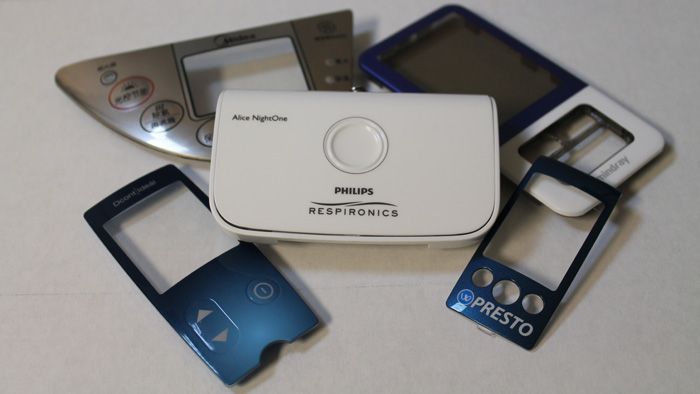Discovering Ingenious Production with In-Mold Decorations
Grasping In-Mold Decorations: Techniques, Trends, and Best Practices for Optimal Results
In the realm of production, the art of in-mold designs stands as a pivotal element of item design and production. As markets continually seek ingenious methods to enhance aesthetic charm and capability, understanding the details of in-mold decorations has actually arised as an essential ability. From selecting the ideal products to incorporating advanced design patterns, the journey in the direction of accomplishing optimum cause this domain is complex. By delving into the strategies, fads, and best methods that underpin successful in-mold decoration procedures, businesses can unlock a world of opportunities that not only elevate the aesthetic allure of their products however also simplify production effectiveness and strengthen customer interaction.
Material Choice
Material option is a critical facet of understanding in-mold designs, as it directly impacts the top quality and longevity of the end product. When selecting materials for in-mold decors, it is vital to consider variables such as compatibility with the molding procedure, the preferred visual end result, and the environmental conditions the product will certainly face. Thermoplastic products like polycarbonate, polypropylene, and abdominal are commonly made use of for in-mold decorations as a result of their versatility and capacity to accomplish intricate layouts. These products offer excellent moldability, making it possible for suppliers to produce intricate forms and patterns with precision.
Additionally, materials with high warm resistance are favored for in-mold decorations, especially for items that will be subjected to raised temperatures during their lifecycle. By very carefully choosing the suitable material for in-mold decors, makers can enhance the total quality and durability of their products, satisfying the assumptions of both customers and end-users - In-Mold Decorations.
Style Development
A necessary variable in advancing the field of in-mold decorations is the continual exploration and execution of design advancement strategies. Layout technology plays a critical duty in improving the visual appeal, performance, and overall quality of products made making use of in-mold decor procedures. By integrating ingenious layout elements, suppliers can distinguish their products in the market, attract customers, and stay in advance of rivals.
Among the vital aspects of style development in in-mold decors is the integration of detailed patterns, structures, and graphics that were previously challenging to achieve with conventional decor techniques. Advanced modern technologies such as 3D printing and electronic layout devices make it possible for developers to produce facility and comprehensive designs that can be perfectly moved onto shaped parts. In addition, using lively colors, metallic coatings, and special results like gloss or matte textures can even more elevate the visual allure of in-mold enhanced items.
Furthermore, design development expands past looks to incorporate useful enhancements such as ergonomic shapes, integrated functions, and personalized link elements that deal with particular individual demands. By accepting layout innovation, makers can open new opportunities for item, personalization, and creative thinking differentiation in the competitive landscape of in-mold decorations.
Production Performance
Efficient manufacturing procedures are vital for equating the ingenious designs created in the area of in-mold decors right into premium finished items that fulfill market needs and consumer expectations. In the realm of in-mold decors, manufacturing performance incorporates numerous crucial facets that you can try these out contribute to the general success of the manufacturing procedure.
Furthermore, executing automation and robotics in the production line can significantly enhance performance by streamlining repetitive jobs and lowering the margin of error. Automation not only accelerates the manufacturing procedure yet likewise enhances accuracy and repeatability, resulting in a more top quality and consistent output. Taking on lean manufacturing concepts, such as just-in-time stock administration and waste decrease techniques, can further enhance production performance by minimizing downtime and optimizing resource application. Overall, a holistic approach to manufacturing effectiveness is extremely important in making best use of the capacity of in-mold decor methods and achieving optimum lead to the competitive market landscape.
Top Quality Control Procedures
What are the key techniques for ensuring strict high quality control procedures in the realm of in-mold decors? Quality control procedures are vital in in-mold design procedures to guarantee the production of high-quality and flawless completed items.
Using sophisticated technologies such as computerized inspection systems can also boost the high quality control process by offering trusted and accurate information for evaluation. These systems can detect flaws that may be missed by hand-operated assessments, thus boosting total item top quality and uniformity.

Regular training and development programs for employees associated with the in-mold decoration process can likewise contribute to preserving high-grade standards. By enlightening team on best methods, high quality assumptions, and the value of attention to information, business can foster a society of top quality awareness throughout the company.
Customer Allure
To boost the bankability of in-mold decor products, providing and understanding to consumer choices play a vital duty in establishing their allure and success. Providing customization options such as individualized designs, shade variants, and textural elements can considerably enhance the allure of in-mold decor items.

Conclusion
In-mold designs supply a flexible and efficient way to boost item aesthetic appeals. Understanding in-mold decors calls for a holistic technique that considers all aspects of the manufacturing procedure to make certain success.
In the realm of manufacturing, the art of in-mold decors stands as a critical aspect of product layout and production. Layout technology plays an essential function in enhancing the visual appeal, functionality, and general quality of items produced using in-mold decoration processes.One of the key elements of style development in in-mold designs is the integration of complex patterns, structures, and graphics that were formerly testing to attain with typical design techniques.Efficient production procedures are crucial for converting the ingenious designs established in the area of in-mold decors right into top quality ended up products that meet market needs and consumer expectations. Providing customization options such as tailored layouts, color variations, and textural elements can significantly enhance the allure of in-mold decoration items.